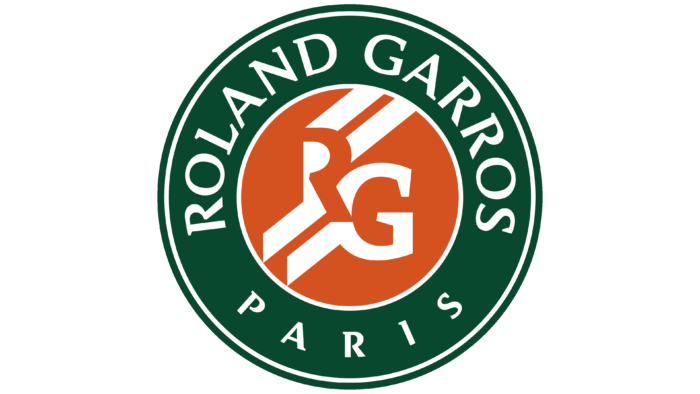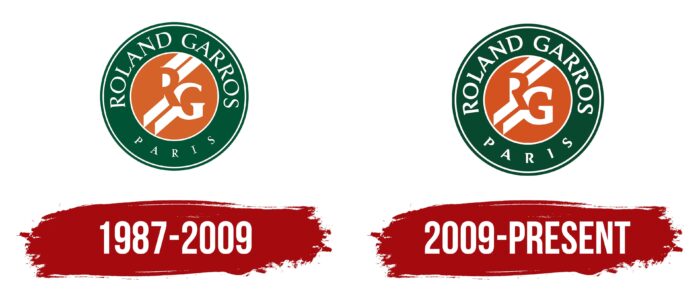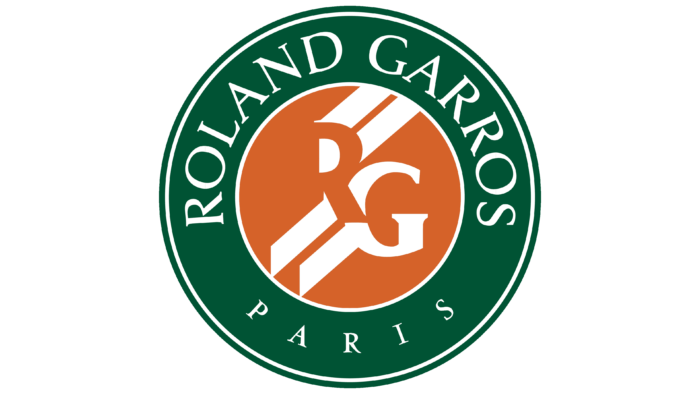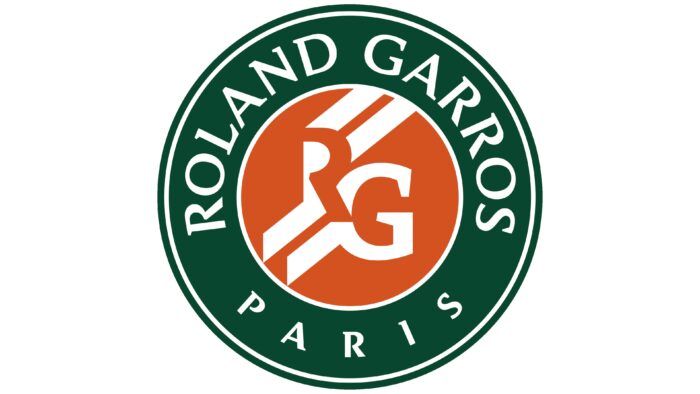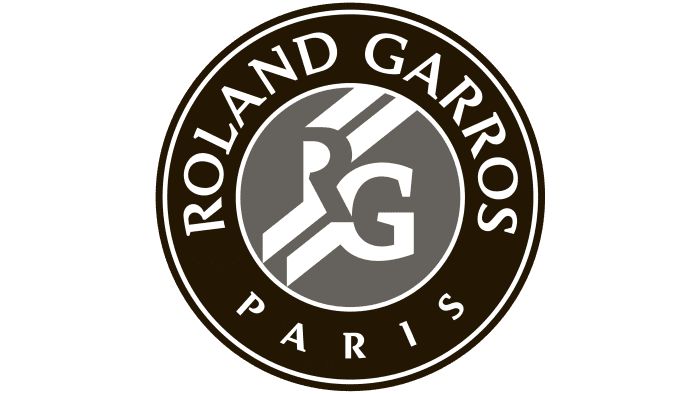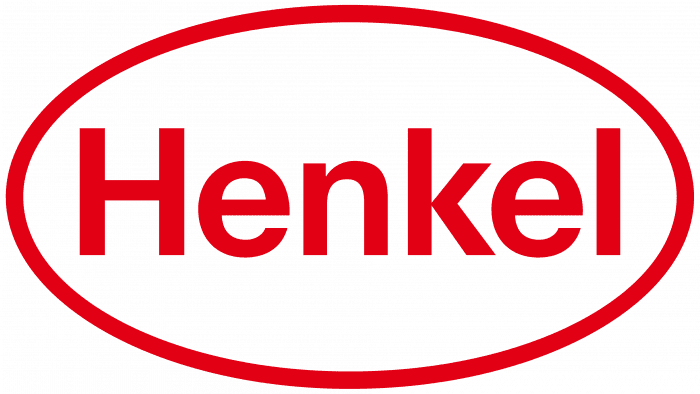The Roland Garros logo embodies the spirit of the tennis tournament. Its asymmetrical design and rounded shapes create a sporty mood because they contain hidden dynamics. Movement is essential in sports. The emblem symbolizes a focus on victory and originally plays with the brand’s name.
Roland Garros: Brand overview
| Founded: | 1891 |
| Headquarters: | Paris, France |
| Website: | rolandgarros.com |
French aviator Roland Garros had a mediocre relationship with tennis. Sometimes, he was chosen just to “swing the racket.” In fact, he played rugby professionally at the Stade de France, where the first tennis tournament took place in 1891. During World War I, he shot down four planes and became a French hero. In 1928, courts for the Davis Cup match between France and the USA were named after him. This was because the number of tennis players could not fit at the Stade de France, and the Paris Athletic Union gave them permission to allocate land only on the condition that the stadium be named after Roland Garros.
Every year, the draw takes place in Paris. In 2010, with the massive expansion, there was an idea to move the “Slam” to Versailles. The city’s description was even depicted on the logo, but this was quickly forgotten.
Meaning and History
Roland Garros is a major tennis tournament and the stadium where it is held. Another name for the championship is the French Open. The annual competitions first began in 1891, and in 1925, they became open to international players. However, its famous logo only appeared in 1987. The orange-green print with white elements embodies the spirit of the tournament, as its shape resembles a tennis ball. In 2009, the recognizable symbol was changed, but not significantly: the designers preserved the brand’s identity and just slightly adjusted the letters.
What is Roland Garros?
Roland Garros (also known as the French Open) is an annual international tennis tournament held on open clay courts in the capital of France. The venue for the competitions is the stadium of the same name, named after the legendary aviator. The prestigious tournament started in 1891.
1987 – 2009
Few people know, but the identity of “Roland Garros” was created by the French creative agency Dragon Rouge. Designers made the logo round to resemble a seal and a tennis ball in shape. Inside was an orange circle with a thin white border. It served as the base for the white letter “G,” supplemented by four diagonal stripes – two on top and two at the bottom. Against the white elements appeared an orange letter “R.” Only its right side was visible, as the developers used negative space and did not outline the letter with contours.
The central part was surrounded by a frame in the form of a dark green circle with the inscriptions “ROLAND GARROS” (at the top) and “PARIS” (at the bottom). All letters are uppercase, but the designers shortened the city’s name to focus on the tournament. The elegant, contrasting font with long serifs looked appropriate because it had internal dynamics, and movement is associated with sports.
2009 – today
The 2009 redesign affected the inscriptions and, accordingly, influenced the elements used to create negative space. As a result, the shape of the white diagonal stripes was slightly changed to emphasize the new contours of the letter “R.” The adjacent letter “G” also looks and is positioned differently: it became more balanced and visually heavier.
But the most significant changes occurred with the text in the circle. The designers enlarged the word “PARIS,” although even after that, it is smaller than the phrase “ROLAND GARROS.” They also made the letters thicker and removed some serifs to create asymmetry. The colors remained unchanged: the inner circle is orange with an ocher hue, and the outer frame is dark green.
Roland Garros: Interesting Facts
The French Open, also known as Roland Garros, is a famous tennis tournament played on clay courts in Paris, France. It’s one of the four big tennis tournaments in the world.
- How It Started: It began in 1891 for French club members and got its name from Roland Garros, a French pilot and war hero, when it moved to its current location in 1928.
- Clay Courts: It’s the only one of the big tournaments played on clay, which makes the ball bounce higher and the games go longer. Players need to be strong and smart to win.
- Trophies: The winners get special trophies named after French tennis stars. Men win the Musketeers’ Cup, and women win the Suzanne Lenglen Cup.
- Rafael Nadal: He’s called the “King of Clay” because he’s won this tournament more times than anyone else.
- Night Games: In 2021, they started having matches at night to let more people watch and make the tournament even more exciting.
- Making It Better: They’ve been updating the place, adding a roof that can close so rain doesn’t stop the games and lights for the night matches.
- Clay Challenges: Clay makes it easy to see where the ball hits so players can argue more. It’s a different kind of game on clay than on other surfaces.
- What to Wear: There’s no strict rule for what players must wear, but the red clay can stain clothes, so players often pick outfits that hide the stains well.
- Winners from Everywhere: Many players from different countries have won, showing how tennis is loved worldwide. But being good with clay is a special skill that helps a lot.
- Watching It: People from all over the world watch the French Open on TV. It’s a big deal that shows off great tennis, French food, and Paris.
Roland Garros is a major tennis event that tests players uniquely because of its clay courts, cool history, and amazing performances.
Font and Colors
All inscriptions on the Roland Garros logo are made in the font “Le Monde Livre,” which was invented by Jean-François Porchez—prices for this font range from 146 to 327 euros.
It is considered the ancestor of play on clay courts. The developers of the Roland Garros logo focused on the color of the clay and marked it with white stripes, as on the stadium.
The courts are surrounded by trees and lawns, whose green color appeared on the Roland Garros logo created in 1987. Before that, various posters instead of a logo were used to announce the tournament.
Roland Garros color codes
| Brown | Hex color: | #b06835 |
|---|---|---|
| RGB: | 176 104 53 | |
| CMYK: | 0 41 70 31 | |
| Pantone: | PMS 471 C |
| Green | Hex color: | #06492d |
|---|---|---|
| RGB: | 6 73 45 | |
| CMYK: | 92 0 38 71 | |
| Pantone: | PMS 3425 C |
